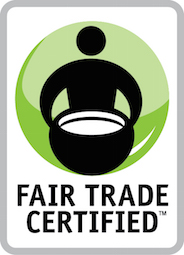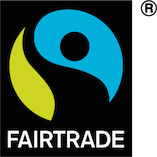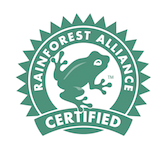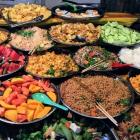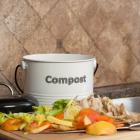Sustainabili-Tea
Submitted by Lara Isaacson on | Updated Tue, 20/12/2016 - 21:34
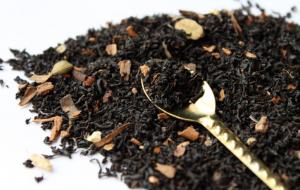
From your cup of earl grey or your mystifying medicinal herbal blend, tea can have incredibly calming or invigorating effects on our bodies and minds. Yet, you eco-nerds out there may be searching for simple ways to green your routine. Why not start with your morning (or afternoon) tea? Let’s take a deeper look into the various footprints of tea and tips on how to find sustainabili-tea.
The Tea Plant and Habitat
As many avid tea-drinkers know, the first cup of tea was said to be enjoyed by Emperor Shennong of China after he brewed it by accident in his garden. To this day, the southwestern province of Yunnan is credited with this interminable beverage. (Boalt Richardson, 2014)
Camellia Sinensis is proper name for the tea plant, and it is the only scientific name I really know by heart. This wondrous plant creates what we know as green, black, white, and oolong tea. Yes, you read that correctly, they all come from the same plant! The difference in tea comes in the process of making the tea. If you’re hoping to brew local and make your own tea, here is a link to get you started. (WARNING! Making delicious tea leaves is not for the impatient soul--unless you are attempting to cultivate your zen). Making tea is a process that has taken centuries to perfect and still remains a multi-day project, after the plant is grown. (Camellia Forrest Nursery)
Camellia Sinensis is native to China, Tibet, and Nothern India, but today it is also widely grown in India, Japan, Tawain, and Sri Lanka (The Fragrant Leaf & Boalt Richardson, 2014). These locations are of course far from some of the locations (the United Kingdom, Canada, the United states, etc) that steep their fine products. This distance becomes important when looking at the carbon footprint of tea.
Footprints of Tea
Carbon Footprint:
The carbon footprint of tea varies greatly depending on how far your tea traveled, how it was packaged, how it was processed, as well as how the tea leave waste is discarded. It can range from -6g to 200g of Carbon Dioxide per cup. (Melican & Samover)
Loose leaf tea generally has a much lower footprint than bagged tea (about 10 times lower!) (Melican & Samover). The average loose leaf cup of tea is only responsible for 20g of carbon dioxide emissions (Melican & Samover). As a comparison, milk has about 225g per cup (Melican & Samover). The disparity comes with the packaging, loose leaf tea may be placed in a reusable tin whereas the bags are often attached to a string that is attached to a tag with a staple, all of which is individually wrapped, placed in a box, and shrink-wrapped for ‘freshness’. The over-packaging of any product easily ups the carbon footprint simply by the sheer need to manufacture and ship the extra pieces. Why have we not yet realized that most produce has its own packaging? A banana in plastic wrap and styrofoam? You’ve got to be kidding me!
Re-steeping your tea for a second cup, also reduces your tea’s carbon footprint (Sauer, 2009). I find a quick first steep, makes for a better second steep. As I see it, the point is not to leave the tea boling till it is as bitter as coffee anyway.
Putting milk in your tea can more than double the emissions for that lovely cup of loose leaf tea from about 20g to 50g of carbon dioxide per cup (the Gaurdian & Ethical Consumer)! So if you'd like to slim your footprint further, using less milk, using it less often, or ditching it all together can really get that stamp that footprint down.
Additionally, boiling only the water you need would take less energy (creating less emmissions as well) (The Guardian and Samover). Boiling water for tea can account for as much as 70% of the carbon footprint of tea due to the typical ways electricity is produced (ESU Services).
Therefore, if I drink one cup of Darjeeling bagged tea with milk per day (with my kettle holding about twice the amount of water that I need for the tea), that equates to about 79.5g of carbon per day or 64lbs (29kg) per year (ESU Services, the Gaurdian, & Ethical Consumer).
To reduce that I can:
1. Switch to loose leaf tea and reduce the footprint to 40.2lbs (18.3kg). (a 37% reduction)
2. Drink my tea without milk 1 day per week to reduce the footprint to 60.5lbs (27.5kg). (a 5% reduction)
3. Boil only the water I need and reduce the footprint to 38lbs (17.3kg). (a 41% reduction)
If I do all of the above my yearly tea footprint can be reduced to only 26.3lbs (11.9kg)! That's a 59% reduction from my hypothetical daily Darjeeling latte. Simple shifts equal big change!
--To go the extra mile and eliminate all milk from your tea could reduce the tea's footprint to 5.6lbs (2.6kg), in total, making a 91% reduction of the tea's carbon footprint possible.--
Waste Footprint:
Of course, composting the tea leaves will also help prevent the creation of Methane gas in your local landfill (U.S. Environmental Protection Agency). Methane gas is a much more potent green house gas, so it heavily contributes to Climate Change (U.S. Environmental Protection Agency). Compost also creates healthy soil, rather than landfills that take up land.
Water Footprint:
The virtual water footprint of tea is shocking, ringing in at 30 litters per cup on average (Water Footprint). However, that is less than half of coffee’s water footprint (Water Footprint).
Now, to be clear, I am not saying that everyone should stop drinking coffee, and I refuse to tell anyone to stop drinking tea. The idea of footprint analysis is to create appreciation for what resources (natural or human) it takes to bring us our creature comforts.
How can you do better now that you know better? If you don’t want tea, say, “No thank you.” Also, if someone does not want tea, don’t force them to drink it! (This applies literally and metaphorically, on a tangential note.) Sounds like common sense, but we all know that we waste food and drinks. Finding sustainabili-tea is cultivating what truly brings well-being to us, our fellow humans, and the planet. Waste, simply does not fit into that equation.
I’ll Take it Black with Cream and Sugar
If you are a purist when it comes to tea and think that sweetening your tea is a crime, please feel free to skip this section. If you on the other hand like a subtle sugar high or like only a little tea in your sugared chai, please read on.
Personally, I do like to add a bit of sweetener and milk to my morning tea. On occasion, I will have some Genmaicha (Japanese green tea with rice) unadulterated, but I understand the pleasure offered by a slightly sweet Earl Grey latte.
As a general rule, synthetic sugars and processed milk products are going to not only add to the resources needed to make your cup of tea, but they will also likely harm our bodies in the long term. Yet, as with any consumable, there are organic certified, fair trade certified, unbleached, and raw alternatives that are better for your health and the environment.
For example, local raw honey is a time-honored addition to tea for that satisfies sugary cravings while fighting-off colds, allergies, and having a relatively low carbon footprint (due to distance traveled). Some non-local honey has hidden ingredients, so beware!
Similarly, local, homemade, and/or certified organic milk products (animal or plant based) in returnable glass bottles without sugar added are a great ways to make that chai creamy without the guilt of a spike in carbon emissions and nasty synthetic pesticides.
That all being said, switching it up once a week can really make a difference, as we saw above. Eliminating just one cup of creamy tea each week can save 1,560g or 3.4lbs (1.5kg) of carbon emissions each year.
Fair or Direct Trade?
Fair Trade certification came about as a way to ameliorate the unstable and exploitative markets of products such as chocolate, sugar, coffee, and tea. With consumers physically disconnected with the producers in third-world countries that begin the supply chains, how else can we be assured that our favorite treats are not coming at the expense of our fellow humans and the environment? This certification marks an incredibly important step forward in being conscious about what we buy. Fair Trade certification ensures that farmers and their communities are being helped by markets. (Fair Trade USA)
Yet, if you’re a frequent-customer at independent coffee shops, you may have noticed another term popping-up. Direct trade is also a certification that is attempting to add some equality back into the system while assuring the quality of the product. Instead of working through community-based co-ops (as Fair Trade does), Direct trade is well…direct. The seller (who is often the roaster) works directly with the farmers to provide more money directly to the farmer while being able to give feedback about the product’s quality. Direct trade does not have much certification backing, yet, though. So it is always good to research the company that makes the direct trade claim. (Ethical Coffee, Treehugger, 2014)
Some may argue for one over the other, but both systems have benefits. Arguably, one system may work better in different location about the globe (Treehugger, 2014). Some companies are even beginning to incorporate the fair trade ideals of uplifting the community and protecting the environment with a direct trade model. Either certification is certainly a step up from your don’t ask, don’t tell tea that simply claims to be “inspired by ancient tradition”.
The Big Three of Sustainabili-Tea
In summary, when shopping look for these 3 things to ensure your tea brings security and health to its producers and the planet.
1. Fair Trade Certification
(If you trust the company, Direct trade can also be a good option)
2. Organic Certified
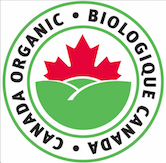
3. Loose Leaf (sans plastic) Buy just how much you need in the ‘bulk’ section, putting it in your favorite reusable tea tin.
BONUS POINTS:
The Rainforest Alliance certification is also another great one to look out for. This organization assures sustainable land use practices and works to protect the health and well-being of farmers. This is their logo:
There are many other great certifications out there, but there is also a lot of greenwashing, so if you are unfamiliar with a label or claim, Google-it! Be empowered to make a choice you can feel is worthwhile…like drinking that cup of satiating sustainabili-tea...
What about Herbal?
Of course, herbal tea does not have any actual tea leaves in it. Tea leaves are the source of caffeine in all the other teas. Herbal tea’s sustainable version depends on where the ingredients are sourced from and how they are grown. Even so, loose leaf tea is still going to have a smaller carbon footprint and Organic or Fair Trade certifications are still going to have similar implications. However, some herbal tea ingredients could surely be grown in your home or locally, so sourcing locally will ultimately give you the lowest carbon footprint.
Stay conscious and sip some sustainabili-tea!
Sources and Resources:
http://theecoguide.org/virtual-water-and-conscious-choices
http://waterfootprint.org/en/resources/interactive-tools/product-gallery/
https://www.buzzfeed.com/sophiegadd/absolutely-ridiculously-packaged-foods?utm_term=.lbXM5Lo9gN
http://www.samovartea.com/teas-carbon-footprint/
http://www.levelground.com/about/values/
http://www.thefragrantleaf.com/the-tea-plant
http://www.camforest.com/category_s/53.htm
http://www.rainforest-alliance.org/work/agriculture/tea
http://www.choiceorganicteas.com/caffeineintea.php
http://bodyecology.com/articles/hidden_dangers_of_processed_foods.php
http://www.purehealingfoods.com/honeyInfo.php
http://www.foodsafetynews.com/2011/11/tests-show-most-store-honey-isnt-honey/#.VygSG2P0if4
http://www.who.int/maternal_child_adolescent/documents/fch_cah_01_02/en/
https://www3.epa.gov/climatechange/ghgemissions/gases/ch4.html
http://fairtradeusa.org/what-is-fair-trade#
http://www.ethicalcoffee.net/direct.html
http://www.theguardian.com/environment/green-living-blog/2010/jun/17/carbon-footprint-of-tea-coffee
http://www.ethicalconsumer.org/ethicalreports/tea-industry-report/greentea.aspx
http://www.esu-services.ch/fileadmin/download/doublet-2010-LCA-Darjeeling-tea-1.0.pdf
Modern Tea by Lisa Boalt Richardson (LINK: http://www.lisaknowstea.com)
You will save the Earth by sharing and/or tweeting (corny right?)

